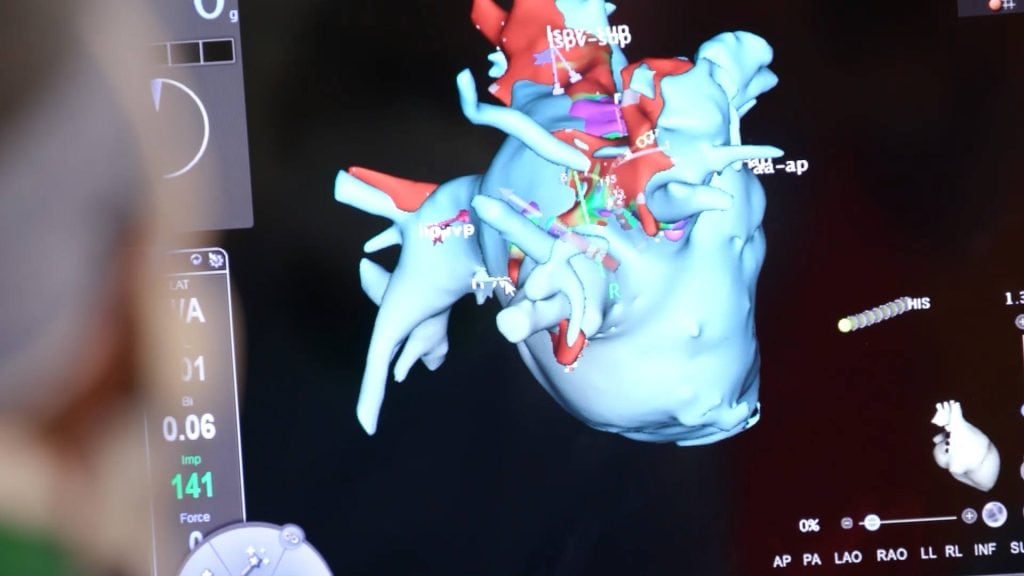Overview
Cardiogenic shock is a life-threatening condition in which your heart suddenly can't pump enough blood to meet your body's needs. The condition is most often caused by a severe heart attack, but not everyone who has a heart attack has cardiogenic shock.
Cardiogenic shock is rare. It's often deadly if not treated immediately. When treated immediately, about half the people who develop the condition survive.
Symptoms
Cardiogenic shock signs and symptoms include:
- Rapid breathing
- Severe shortness of breath
- Sudden, rapid heartbeat (tachycardia)
- Loss of consciousness
- Weak pulse
- Low blood pressure (hypotension)
- Sweating
- Pale skin
- Cold hands or feet
- Urinating less than normal or not at all
Symptoms of a heart attack
Because cardiogenic shock usually occurs in people who are having a severe heart attack, it's important to know the signs and symptoms of a heart attack. These include:
- Pressure, fullness or a squeezing pain in the center of your chest that lasts for more than a few minutes
- Pain spreading to your shoulder, one or both of your arms, your back, or even your teeth and jaw
- Increasing episodes of chest pain
- Shortness of breath
- Sweating
- Lightheadedness or sudden dizziness
- Nausea and vomiting
Seek medical attention quickly when having these signs or symptoms to decrease your risk of developing cardiogenic shock.
When to see a doctor
Getting heart attack treatment quickly improves your chance of survival and reduces damage to your heart. If you're having symptoms of a heart attack, call 911 or other emergency medical services for help. If you don't have access to emergency medical services, have someone drive you to the nearest hospital. Don't drive yourself.
Get the latest heart transplant-related health information from Mayo Clinic.
Causes
In most cases, a lack of oxygen to your heart, usually from a heart attack, damages its main pumping chamber (left ventricle). Without oxygen-rich blood flowing to that area of your heart, the heart muscle can weaken and go into cardiogenic shock.
Rarely, damage to your heart's right ventricle, which sends blood to your lungs to get oxygen, leads to cardiogenic shock.
Other possible causes of cardiogenic shock include:
- Inflammation of the heart muscle (myocarditis)
- Infection of the heart valves (endocarditis)
- Weakened heart from any cause
- Drug overdoses or poisoning with substances that can affect your heart's pumping ability
Risk factors
If you have a heart attack, your risk of developing cardiogenic shock increases if you:
- Are older
- Have a history of heart failure or heart attack
- Have blockages (coronary artery disease) in several of your heart's main arteries
- Have diabetes or high blood pressure
- Are female
Complications
If not treated immediately, cardiogenic shock can lead to death. Another serious complication is damage to your liver, kidneys or other organs from lack of oxygen, which can be permanent.
Prevention
The best way to prevent cardiogenic shock is to make lifestyle changes to keep your heart healthy and your blood pressure in check.
- Don't smoke, and avoid secondhand smoke. If you smoke, the best way to reduce your heart attack risk is to quit.
- Maintain a healthy weight. Being overweight contributes to other risk factors for heart attack and cardiogenic shock, such as high blood pressure, cardiovascular disease and diabetes. Losing just 10 pounds (4.5 kilograms) can lower blood pressure and improve cholesterol levels.
- Eat less cholesterol and saturated fat. Limiting these, especially saturated fat, can reduce your risk of heart disease. Avoid trans fats.
- Use less salt. Too much salt (sodium) leads to fluid buildup in the body, which can strain the heart. Aim for less than 2,300 milligrams (mg) a day of sodium. Salt can be found in many canned and processed goods, so it's a good idea to check food labels.
- Cut back on sugar. This will help you avoid nutrient-poor calories and help you maintain a healthy weight.
- Limit alcohol. If you choose to drink alcohol, do so in moderation. For healthy adults, that means up to one drink a day for women and up to two drinks a day for men.
- Exercise regularly. Exercise can lower your blood pressure and improve the overall health of your blood vessels and heart. Get at least 150 minutes of moderate aerobic activity or 75 minutes of vigorous aerobic activity a week, or a combination of moderate and vigorous activity. It's recommended to spread out this exercise during the course of a week. Greater amounts of exercise will provide even greater health benefits.
If you have a heart attack, quick action can help prevent cardiogenic shock. Seek emergency medical help if you think you're having a heart attack.

